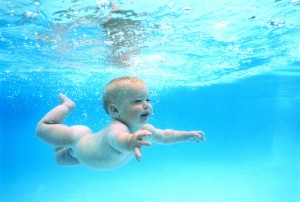Have you ever tried to hold your breath for more than a minute under water? Well, if you had succeeded you were not reading this post! Holding breath under water has always been part of man’s dream. But it seems it will not be a dream for the future generations. According to a recent research salamanders have developed the trait of producing oxygen themselves rather than taking it from atmosphere.
According to this study which was conducted in Dalihousie University faculty of Zoology eggs of salamander , Ambystoma maculatum, were placed among chlamydomonad algae. The result of this experiment is that the DNA of the algae and the DNA of the salamander eggs were somehow combined. Algae is a nitrogen-dependent organism and produces oxygen gas as a form its waste. Salamanders on the other hand require oxygen to function and survive, and combining algae and the salamanders DNA would produce an organism which produces oxygen on its own and would not require oxygen from atmosphere.
Researchers have also found traces of this algae in mature salamander’s reproductive system which suggests that these algae are inherited to other generations.
What good is it to humans?
New technologies such as DNA Recombinant has enabled us to combine DNA strands of different species. In this technology, the wanted DNA is reproduced many times by molecular cloning in laboratory. These DNAs are then directed to the main DNA sequence by means of another organism and sequencing. Viruses are usually used in this step to deliver the multiplied DNA to the main DNA.
Formation of recombinant DNA requires a cloning vector, a DNA molecule that will replicate within a living cell. Vectors are generally derived from plasmids or viruses, and have the necessary sequence of DNA for replication. The inserted DNA may or may not express its codes depending on its place on the main DNA sequence. Thus, markers are used to place the DNA among functional genes.
Human DNA is packed with hundreds of viruses DNA s which have entered our DNA sequence along the course of evolution. This finding suggests that viral vectors can be used to alter human DNA sequence by means of insertion. Recently, this technology has been used in the treatment course of of insulin-dependent diabetes. So, it’s not far beyond imagination if scientists mix algae DNA with that of human.
Soon the future of human beings will be altered with this technology and super humans will be produced! but until that day do not hold your breath for too long under water unless you are this guy:
References:
Canadian Journal of Zoology, 2008, 86(11): 1289-1298, 10.1139/Z08-115


